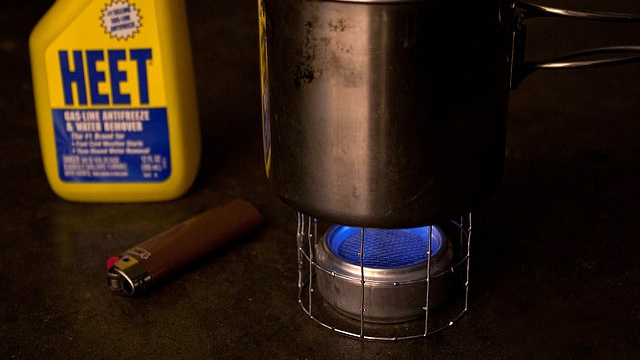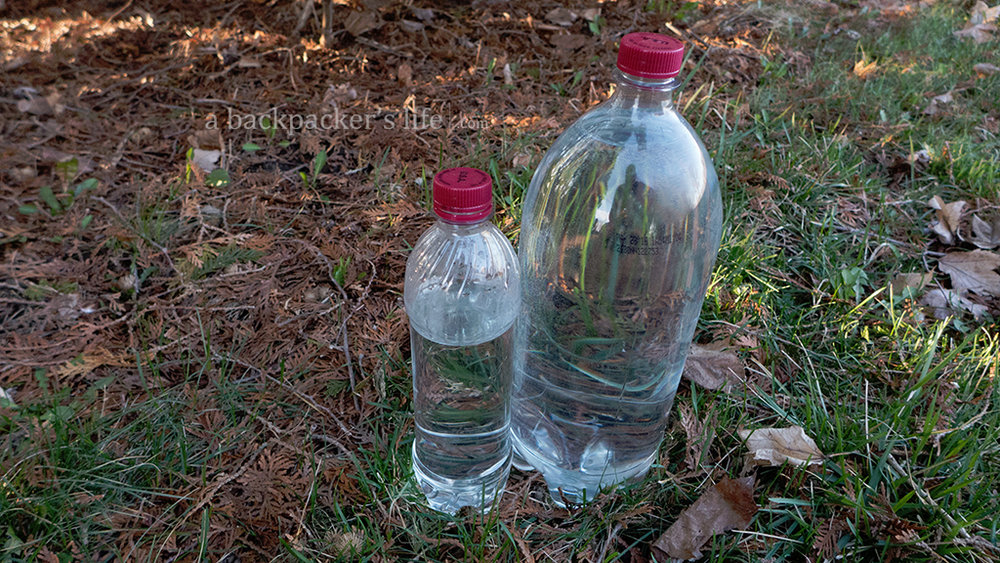This is part four in a series about my $100 Super-Ultralight Gear List. Part four, is all about my cooking gear, DIY alcohol stove, and water treatment.
Read MoreNutrition for Thru-hikers: An Interview with Tavis Piattoly, Part 3
For a long-distance hiker, life on the trail often leads to nutritional deficiencies, but in town we have new choices available. In part three of my interview with sports dietitian, Tavis Piatolly, I asked which foods are the best in town.
Read MoreNutrition for Thru-hikers: An Interview with Tavis Piattoly, Part 2
On a long enough hike, where you'll need to stop for supplies along the way, it can be very difficult to stick to a specific meal plan. That being said, in part two of my interview with Sports Dietitian Tavis Piattoly, I asked for specifics.
Read MoreNutrition for Thru-hikers: An Interview with Sports Dietitian, Tavis Piattoly
The Internet is full of sports nutrition advice, much of which is driven by fads and not entirely evidence-based, but even the good advice doesn't take into account the limitations that long-distance hikers face. I decided to consult an expert, Tavis Piattoly's, Sports Dietitian and Nutrition Consultant for the New Orleans Saints,
Read MoreGrocery Shopping with a Thru-hiker, Part 2
In part one, I wrote about the features of the best backpacking foods (calorie dense, easy to prepare, nutritious, non-perishable, appetizing, inexpensive, and versatile). In part two, I list common items on my resupply shopping list that take all of that into account with more nutrition advice from New Orleans Saints sports dietitian, Tavis Piattoly.
Read MoreGrocery Shopping with a Thru-Hiker
This series on food is about long distance hiking with the aspiring first-time thru-hiker in mind, but it will still be relevant for any multi-day hike. The main difference is that with long distance hiking, things like budgets, resupplying along the way, limited availability of items in towns, maintaining body weight, and good nutrition are more important factors to consider. Before making your shopping list, here are a few things to consider.
Read MoreHow to Make a Wicking Alcohol Stove
There's an infinite number of ways to make an alcohol stove, but I like this one because it doesn't need to be primed, it can't explode like pressurized stoves, the burning fuel can't spill if tipped over, and it weighs just 15 grams. Here's how to make it.
Read MoreWhy I Use Plastic Soda Bottles For Water Containers
They're Free and Destined for a Landfill
Rather than spend money on various water containers, I carry one or two 16 oz soda bottles and one 2 L bottle for camp. I always carry more than one bottle, so I can lose or break one and still have a way to transport water. A hiker with a dog came to my shelter on the Long Trail in Vermont, and the dog decided one of my water bottles was a fun chew toy. I'm glad I had a backup.
They're Lightweight
At under one ounce, soda bottles are lighter than Nalgene and aluminum bottles.
They're Rigid, but Squeezable
I'm not a fan of water pouches, because they're harder to fill with water from a slow moving source or lake. The rigidity of a plastic bottle won't collapse under the weight of the water.
Unlike Nalgene and other hard plastic or aluminum bottles, soda bottles can be used with squeeze filters, such as Sawyer or LifeStraw. This makes it quick and easy to fill my cook pot or to squeeze all the air out to treat the cap and threads when chemically treating the water. Also, poke a few holes in a spare cap, and you have a camp shower.
They're Better Than Hydration Bladders
Hydration bladders are difficult to get in and out of my backpack, hard to see how much water you have left, hard to clean, and not easy to attach to the outside of any of my packs.
They're Safe
One argument I've heard for using Nalgene or aluminum is that soda bottles can release dioxins in your water. This is an urban legend. There are no dioxins in plastic soda bottles. That being said, avoid heating up water inside the bottle. A group of chemicals called phthalates are sometimes added to plastics to make them flexible and less brittle. These can leach into water if you heat up the plastic. (Reference)
Another reason I've heard for not reusing plastic soda bottles, is that bacteria can develop under the cap, but these get cleaned regularly during my bleach treatment, so I'm not concerned about that. Anyway, It's just as much a problem with Nalgene bottles, Aluminum Bottles, or hydration bladders.
Q&A: How Much Water Should I Carry?
The amount of water you should carry depends heavily on outdoor temperatures and varies from person to person, but the rule of thumb is: drink 1/2 to 1 quart of water per hour of hiking. On a hot day climbing up a mountain, your body can lose 1 - 2 quarts per hour from perspiration. It's pretty simple though, if you feel thirsty at all, drink.
If you want to take it one step futher, you can determine how much water you are losing during exercise. Weigh yourself before and after a hike or workout. Subtract about 7% from the difference in pounds (to account for the burned calories), then multiply by 16. That's more or less how many ounces of water you need to replace.
Treating Water with Household Bleach
If you are smart about choosing your water source, you could go for days, weeks, or even years without treating your water and never get sick. It's a gamble, but after spending a few days stepping over moose poop, or seeing a bloated dead animal floating in a water source, or worse yet, having to witness your friend doubled over with stomach pains and running off into the trees to decorate the foliage... anyway, what I'm trying to say is, here's how I treat my water.
Read More









